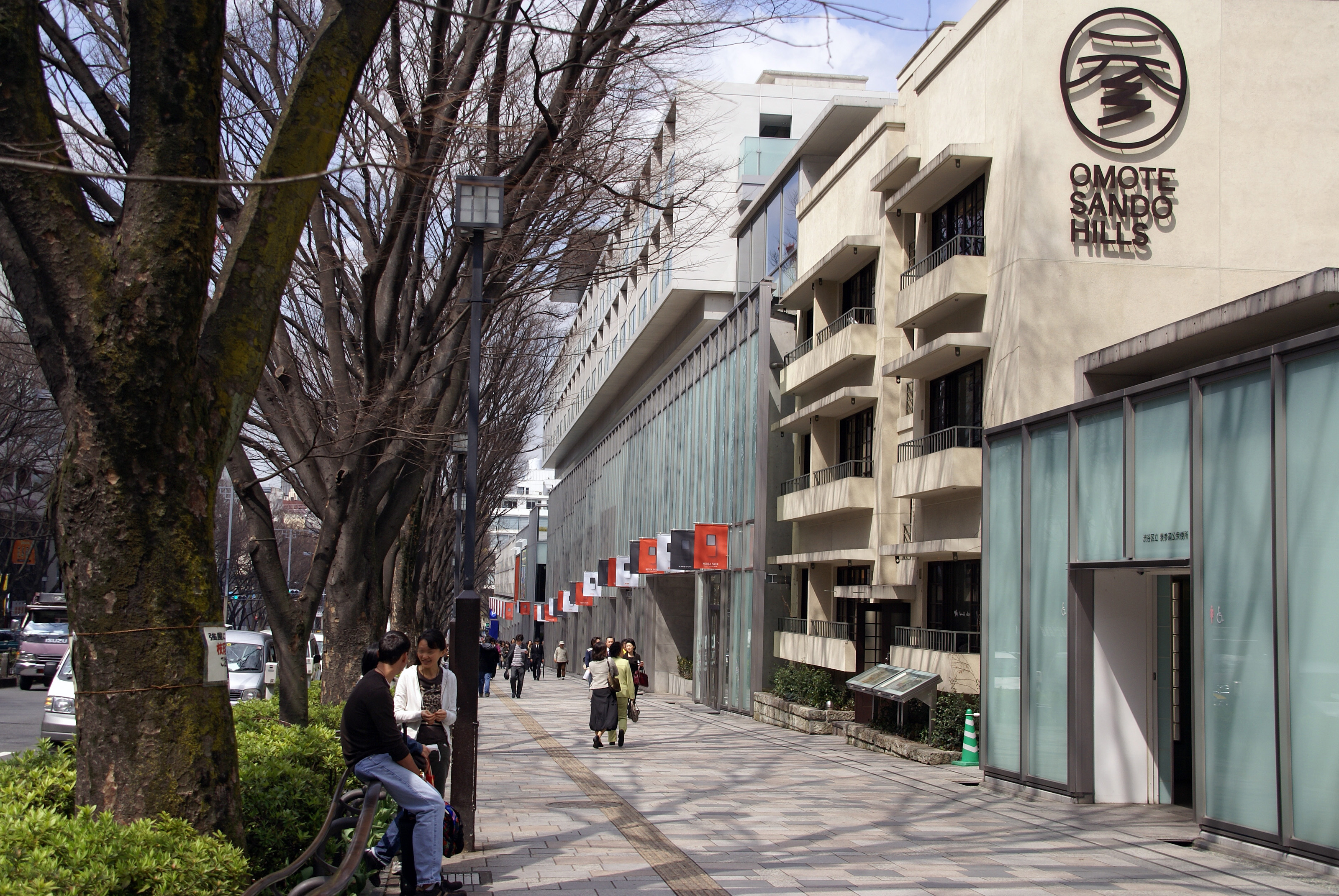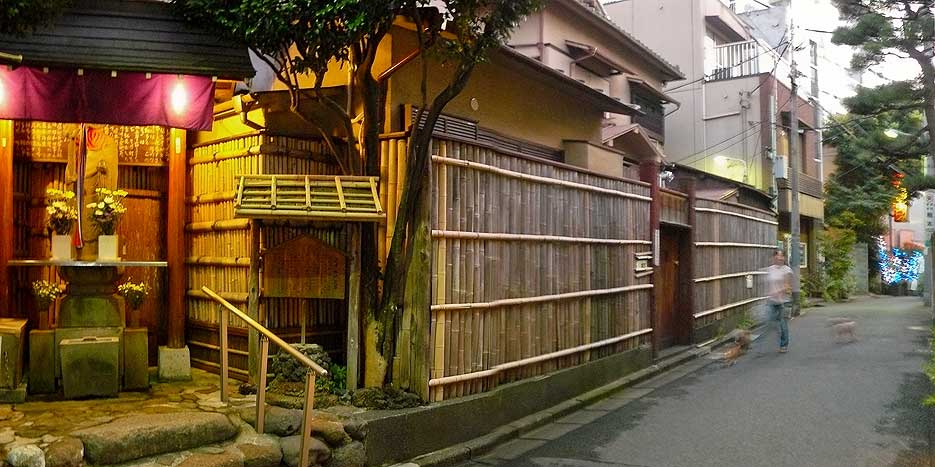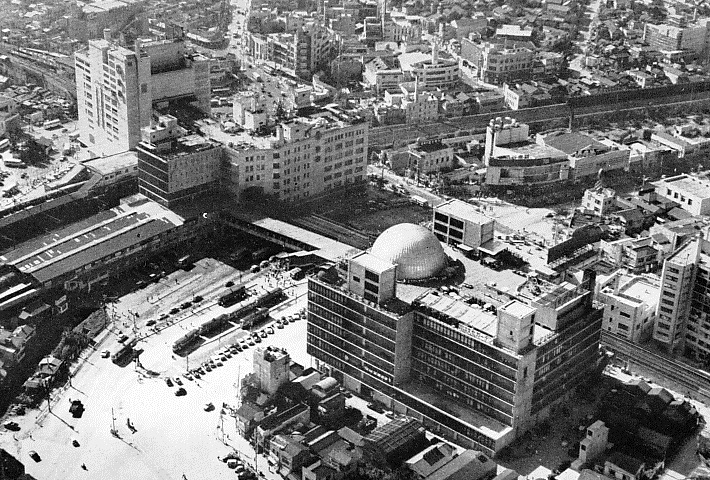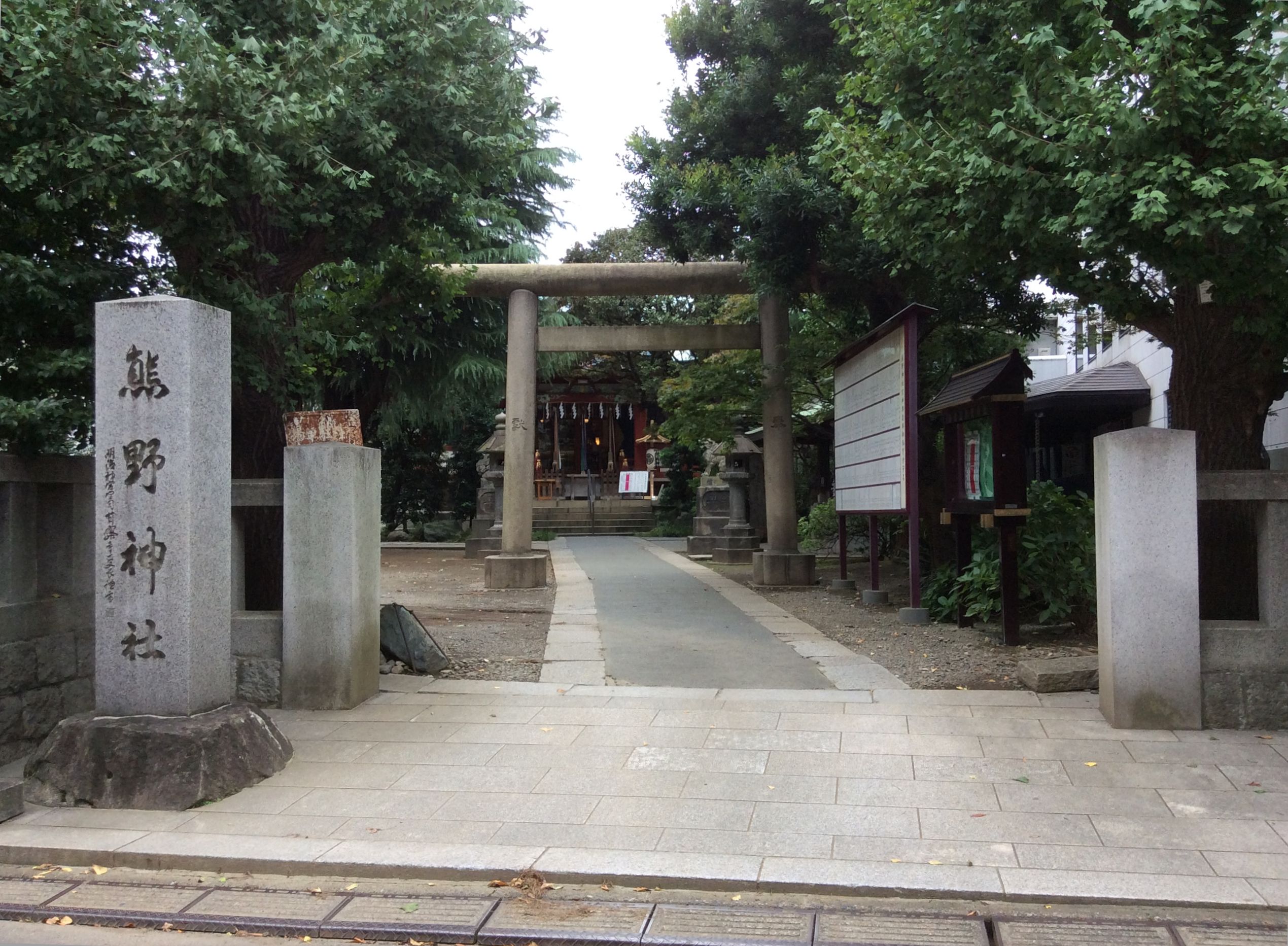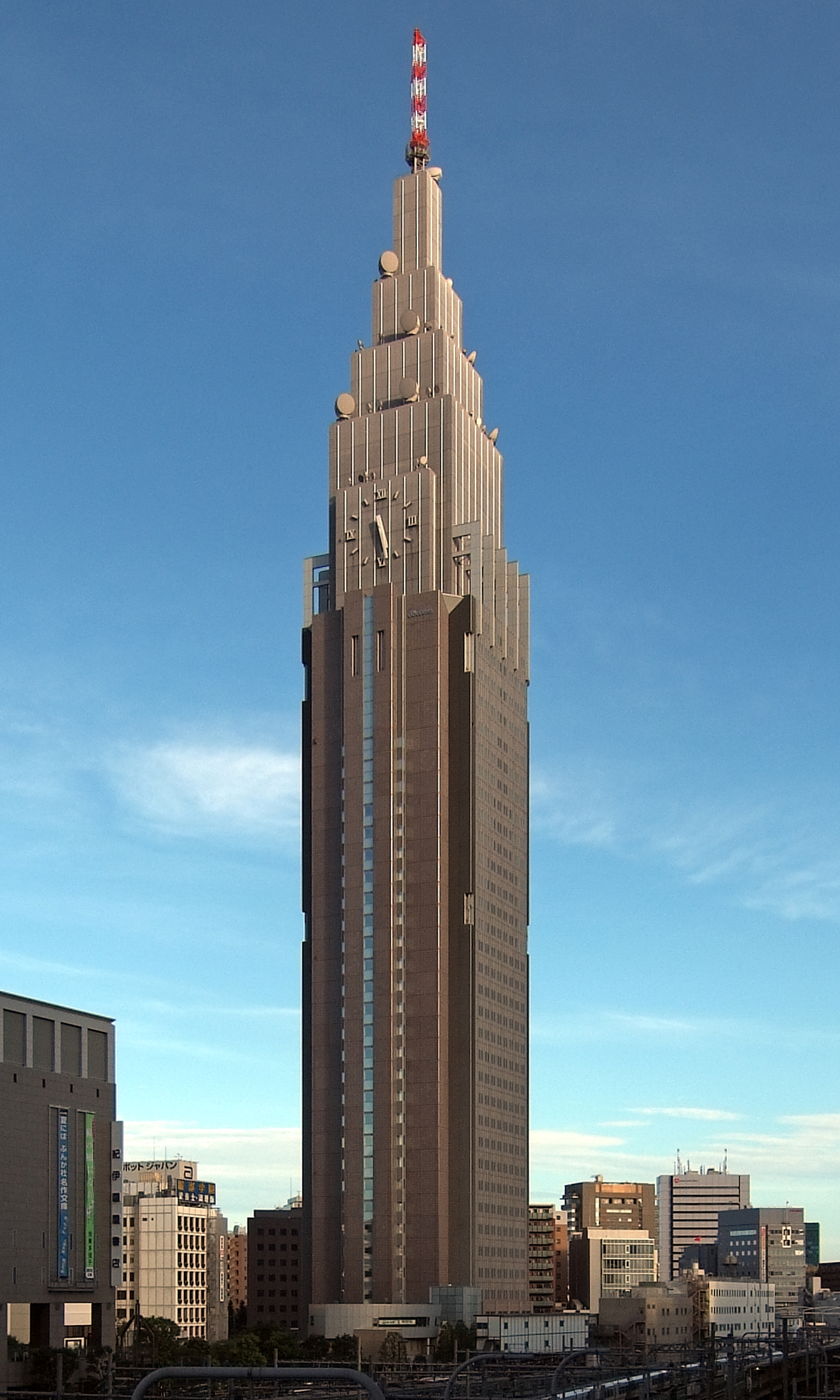|
Harajuku
is a district in Shibuya, Tokyo. Harajuku is the common name given to a geographic area spreading from Harajuku Station to Omotesandō, Tokyo, Omotesando, corresponding on official maps of Shibuya, Tokyo, Shibuya ward as Jingūmae 1 Japanese addressing system, chōme to 4 Japanese addressing system, chōme. In popular reference, Harajuku also encompasses many smaller backstreets such as Takeshita Street and Cat Street, Tokyo, Cat Street spreading from Sendagaya in the north to Shibuya in the south. Harajuku is known internationally as a center of Japanese youth culture and fashion. Shopping and dining options include many small, youth-oriented, independent boutiques and cafés, but the neighborhood also attracts many larger international chain stores with high-end luxury merchandisers extensively represented along Omotesando. Harajuku Station on the East Japan Railway Company, East Japan Railway (JR East) Yamanote Line and Meiji-jingumae Station, Meiji-jingumae 'Harajuku' Stat ... [...More Info...] [...Related Items...] OR: [Wikipedia] [Google] [Baidu] |
Harajuku Station
is a railway station in Shibuya, Tokyo, Japan, operated by East Japan Railway Company (JR East). The station takes its name from the area on its eastern side, Harajuku. This station is served by the circular Yamanote Line. It is also adjacent to Meiji-Jingumae Station on the Tokyo Metro Chiyoda Line, Tokyo Metro Chiyoda and Tokyo Metro Fukutoshin Line, Fukutoshin Lines, and is marked as an interchange on most route maps, although there is no physical connection between the two stations. History The station opened on 30 October 1906 by the Nippon Railway, although the station was nationalized under the Railway Nationalization Act just two days later. The station was opened as a infill station between Shibuya Station, Shibuya and Yoyogi Station, Yoyogi in response to growing local population. Ridership increased after the construction of the Meiji Shrine in 1920, when it became the closest railway station to the shrine. The station building was rebuilt in 1924 after the 1923 Great ... [...More Info...] [...Related Items...] OR: [Wikipedia] [Google] [Baidu] |
Shibuya, Tokyo
is a special ward in Tokyo, Japan. A major commercial center, Shibuya houses one of the busiest railway stations in the world, Shibuya Station. As of January 1, 2024, Shibuya Ward has an estimated population of 230,609 in 142,443 households and a population density of . The total area is . Notable neighborhoods and districts of Shibuya include Harajuku, Ebisu, Omotesandō, Yoyogi and Sendagaya. Shibuya came into the possession of the Shibuya clan in the early 1160s, after which the area was named. The branch of the clan that ruled this area was defeated by the Later Hōjō clan on January 13, 1524, during the Sengoku period, and the area then came under their control. During the Edo period, Shibuya, particularly Maruyamachō on Dōgenzaka, prospered as a town on Oyama Road (present-day Route 246), and in the Meiji era, as a Hanamachi. Shibuya emerged as a railway terminus during the expansion of the railway network beginning in the 19th century, and was incorporat ... [...More Info...] [...Related Items...] OR: [Wikipedia] [Google] [Baidu] |
Shibuya
is a Special wards of Tokyo, special ward in Tokyo, Japan. A major commercial center, Shibuya houses one of the busiest railway stations in the world, Shibuya Station. As of January 1, 2024, Shibuya Ward has an estimated population of 230,609 in 142,443 households and a population density of . The total area is . Notable neighborhoods and districts of Shibuya include Harajuku, Ebisu, Shibuya, Ebisu, Omotesandō, Yoyogi and Sendagaya. Shibuya came into the possession of the Shibuya clan in the early 1160s, after which the area was named. The branch of the clan that ruled this area was defeated by the Later Hōjō clan on January 13, 1524, during the Sengoku period, and the area then came under their control. During the Edo period, Shibuya, particularly Maruyamachō, Shibuya, Maruyamachō on Dōgenzaka, prospered as a town on Oyama Road (present-day Japan National Route 246, Route 246), and in the Meiji era, as a Hanamachi. Shibuya emerged as a railway terminus during the expan ... [...More Info...] [...Related Items...] OR: [Wikipedia] [Google] [Baidu] |
Jingūmae
is a district of Shibuya, Tokyo, Japan. As of October 2020, the population of this district is 12,446. The postal code for Jingūmae is 150–0001. Places of interest Cultural Shrines * Tōgō Shrine * Aoyama Kumano Shrine (青山熊野神社) (Jingūmae 2-2-22) Temples * Myōenji (Jingūmae 3-8-9) * Chōanji (Jingūmae 3-8-4) Churches * Tenrikyo Higashi Chuo Kyokai (Jingūmae 5-14-2) * First Church of Christ, Scientist, Tokyo (Jingūmae 5-6-3) * Tokyo Union Church (Jingūmae 5-7-7) Museums * Ukiyo-e Ōta Memorial Museum of Art * Watari Museum of Contemporary Art * Design Festa Gallery Embassies * Embassy of Turkey (Jingūmae 2-33-6) * Embassy of Estonia (Jingūmae 2-6-15) Other * Harajuku Station * Headquarters of Secom (Jingūmae 1-5-1) * Takeshita Street * Laforet, Laforet Harajuku (Jingūmae 1-11-6) * Harajuku Alta (Jingūmae 1-16-4) * Omotesando Hills * Tokyu Plaza Omotesando Harajuku (Jingūmae 4-30-4) * YM Square Harajuku (Jingūmae 4-31) * Headquarters of United ... [...More Info...] [...Related Items...] OR: [Wikipedia] [Google] [Baidu] |
Meiji-jingumae Station
is a subway station located in Shibuya, Tokyo, Japan. It is a part of the Tokyo Metro subway network, and is served by the Chiyoda Line and the Fukutoshin Line. Harajuku Station on the Yamanote Line is immediately adjacent to Meiji-jingumae Station and is marked as an interchange on most route maps. Due to this proximity and to encourage use of the station by visitors, Tokyo Metro changed station signboards to read on 6 March 2010. Station layout Platforms File:Meiji-jingumae station Chiyoda Line Platforms.jpg, Chiyoda Line platforms, 2018 File:Meiji-jingumae Station platforms 2022 Jun 27 07-57PM.jpeg, Chiyoda Line platforms, 2022 File:Meiji-jingumae station Fukutoshin Line platform.jpg, Fukutoshin Line platforms, 2009 History The Chiyoda Line station opened on 20 October 1972; the Fukutoshin Line station opened on 14 June 2008. The station facilities were inherited by Tokyo Metro after the privatization of the Teito Rapid Transit Authority (TRTA) in 2004. PASMO smart ... [...More Info...] [...Related Items...] OR: [Wikipedia] [Google] [Baidu] |
Cat Street, Tokyo
is an approximately half-mile street in Tokyo, Japan. The street meanders within Harajuku and Shibuya. According to ''Time Out Tokyo'', "Cat Street is the spiritual home of Tokyo’s vibrant street fashion culture. While the strip has been steadily heading upmarket over the past few years, it is still the main conduit for funkily dressed teens on shopping sprees in Tokyo. Highlights include the Tadao Ando-designed edifice housing the Armani Casa interior brand, and collectable figure store Pook et Koop." According to ''Condé Nast Traveler'', "Those who want to get to a taste of the more sophisticated side of Tokyo's celebrated urban aesthetic should not miss Cat Street." References External links * Cat Streetat Lonely Planet Cat Streetat Project for Public Spaces Project for Public Spaces (PPS) is a nonprofit organization based in New York dedicated to creating and sustaining public places that build communities A community is a Level of analysis, social unit (a ... [...More Info...] [...Related Items...] OR: [Wikipedia] [Google] [Baidu] |
Special Wards Of Tokyo
The of Tokyo are a special form of Municipalities of Japan, municipalities in Japan under the 1947 Local Autonomy Act, Local Autonomy Law. They are city-level wards: primary subdivisions of a prefecture with municipal autonomy largely comparable to other forms of municipalities. With a land area of , it is about three-quarters the size of Singapore. As of 2024, it has a population of almost 10 million, with a density of about . Although the autonomy law today allows for special wards to be established in other prefectures, to date they exist only in Tokyo, which consists of 23 special wards and 39 other, ordinary municipalities (cities of Japan, cities, list of towns in Japan, towns, and list of villages in Japan, villages). The special wards of Tokyo occupy the land that was once the core Tokyo City in its 1936 borders before it was abolished under the Tōjō Cabinet in 1943 to become directly ruled by the Tokyo Metropolitan Government, prefectural government, then renamed to " ... [...More Info...] [...Related Items...] OR: [Wikipedia] [Google] [Baidu] |
Tōgō Shrine
The Tōgō Shrine (東郷神社 ''Tōgō-jinja'') was established in 1940 and dedicated to '' Gensui'' (or 'Marshal-Admiral') the Marquis Tōgō Heihachirō after his death. This shrine was destroyed by the Bombing of Tokyo, but was rebuilt in 1964.Tōgō Shrine official homepage, It is located in Harajuku, Tokyo, Japan. There, the Marquis Tōgō Heihachirō is celebrated as a shinto kami. A small museum and a bookshop dedicated to the Marquis Tōgō are located within the grounds of the shrine. The shrine is located near the intersection of Takeshita Street and Meiji Avenue and is accessible from Harajuku Station. The physical remains of the '' Gensui'' (or Grand Admiral) himself are interred at Tama Cemetery in Tokyo. According to ''The Telegraph'', the Tōgō Shrine took possession in 2005 of Admiral Tōgō's original battle flag raised at the Battle of Tsushima; the flag had been in Britain since 1911. Other shrines As for General Nogi Maresuke who had several shrines t ... [...More Info...] [...Related Items...] OR: [Wikipedia] [Google] [Baidu] |
Tokyo Metro Fukutoshin Line
The , formally the , is a subway line operated by Tokyo Metro in west-central Tokyo and Wako, Saitama, Japan. The newest line in the Tokyo subway network, it opened in stages between 1994 and 2008. On average, the Fukutoshin Line carried 362,654 passengers daily in 2017, the lowest of all Tokyo Metro lines and roughly one third of its sister Tokyo Metro Yūrakuchō Line (1,124,478). Overview The Fukutoshin Line is the deepest metro line in Tokyo, with an average depth of . At Shinjuku-sanchōme Station, the line passes under the Tokyo Metro Marunouchi Line, Marunouchi and above the Toei Shinjuku Line, Shinjuku lines at a depth of , with a gap of only to the Shinjuku Line tunnel. The deepest section is at the immediately adjacent Higashi-Shinjuku Station, where the line goes down to , partly due to an underground space reservation for a possible future extension of the Jōetsu Shinkansen to Shinjuku. It is the second Tokyo Metro line to feature express services, after the Tokyo ... [...More Info...] [...Related Items...] OR: [Wikipedia] [Google] [Baidu] |
Sendagaya
is an area within Shibuya ward, one of the 23 special wards of Tokyo. Introduction Sendagaya is nestled in an urban green area in Shibuya ward between Shinjuku ward and Shinjuku Gyo-en (Shinjuku Imperial Gardens) to the north (an area in Sendagaya, 6-chōme, is actually located within the gardens). The National Stadium, also known as Olympic Stadium, Tokyo is located immediately to the east, bordering Sendagaya 2-chome. Meiji Shrine and Yoyogi Station are found to the west. Jingumae and Harajuku are directly south. Many important cultural and sporting venues are located in and around Sendagaya. Sendagaya is a mix of old, new, and incredibly futuristic designs. From Sendagaya Station, the main station in Sendagaya, bustling Shinjuku is a tranquil 10-minute walk away along the Imperial Gardens' western wall. Sendagaya Entrance to the gardens is 2 minutes away from Sendagaya Station. Sendagaya, particularly 3-chōme, is home to dozens of clothing and accessory design wor ... [...More Info...] [...Related Items...] OR: [Wikipedia] [Google] [Baidu] |
Tokyo Metro Chiyoda Line
The is a subway line owned and operated by Tokyo Metro in Tokyo, Japan. On average, the line carries 1,447,730 passengers daily (2017), the second highest of the Tokyo Metro network, behind the Tozai Line (1,642,378).Tokyo Metro station ridership in 2010 ''Train Media (sourced from Tokyo Metro)'' Retrieved July 23, 2018. The line was named after the Chiyoda ward, under which it passes. On maps, diagrams and signboards, the line is shown using the color green, and its stations are given numbers using the letter "C". Overview The line serves the wards of[...More Info...] [...Related Items...] OR: [Wikipedia] [Google] [Baidu] |
Shibuya River
The is a river which flows through central Tokyo, Japan. The river is 2.6 km in length originating close to Shibuya Station and passing through Shibuya and Minato wards before merging with the Furu River near Hiroo and flowing into Tokyo Bay near Shiba Koen. The Inner Circular Route is built above the lower course of the river. Majority of the Shibuya River's banks lack landscaping except for a section right next to the Shibuya Stream skyscraper and retail complex; the major tributary of the river, the Onden River, originates in Sendagaya and passes largely unnoticed directly under Cat Street in the heart of Ura-Harajuku. The Onden River merges with the Uda River in central Shibuya forming the Shibuya River which then flows directly under Shibuya Station as a covered concrete drain. Redevelopment plans for Shibuya Station included the prospect of a more accessible Shibuya River with landscaping and pedestrian access. The redevelopment was completed in September 2018 a ... [...More Info...] [...Related Items...] OR: [Wikipedia] [Google] [Baidu] |
